You may know about the travel sites in Athens and the Greek Islands, but what about Thessaloniki?
I loved the long flights we used to take to Greece from Canada as a child — I always opted for a window seat. Never seemed to need the bathroom. Too eager to keep looking outside. Even at night.
I remember seeing the Atlantic Ocean, the Alps, the sunrise and eventually the sprawling capital of Athens. We’d land, clear customs and quickly race to catch a connecting flight straight to the island of Rhodes. Athens was only a port of entry, a stopover. Never a destination.
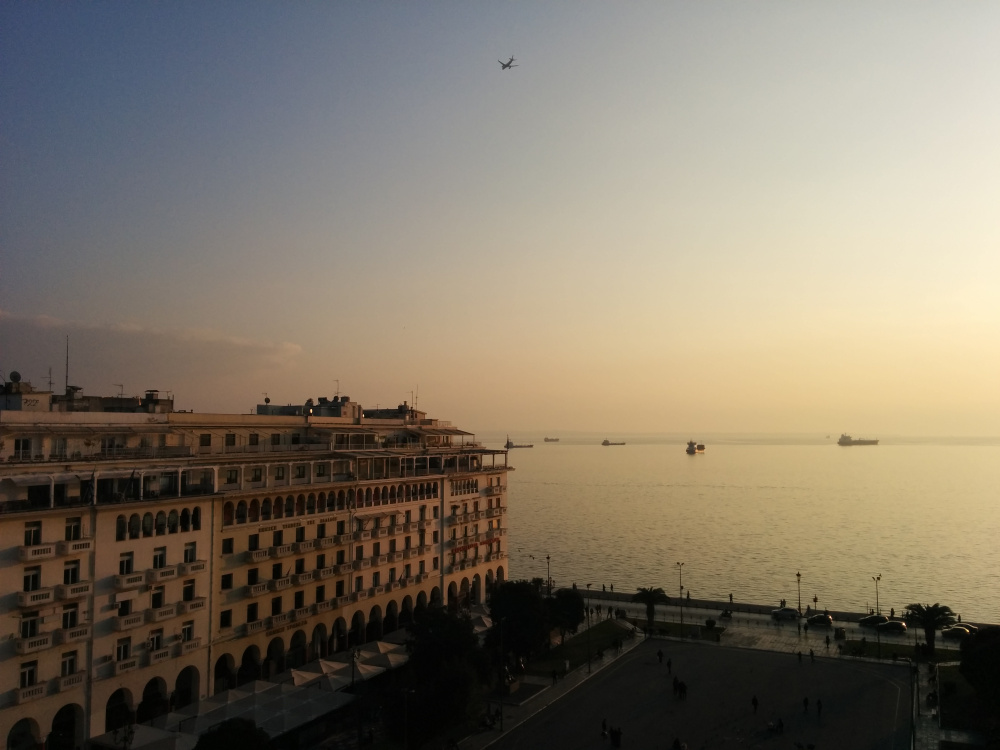
If Athens was only a necessary connector to beach fun, Thessaloniki was rarely on the radar. Sure I had heard about it but it was on the opposite side of the island paradise I knew and loved, a world away.
Chalk it up to the ignorance of youth. Later in life, I studied history and thought more about exploring parts of Greece that were otherwise foreign to me and so many other tourists. And so, I ventured off to the more rugged and equally stunning Thessaloniki.
What I discovered was that while Athens may be the country’s central hub, Greece’s second-city dances to its own bouzouki. Here are 10 essential and unique Thessaloniki experiences that you must have in this culturally chaotic, historically rich and delicious city.
The Waterfront
Thessaloniki’s waterfront is easily one of the most festive anywhere in Europe. The promenade is alive with restaurants, bars, boutiques, cafes and sights. If you’re a first-time visitor, this is the place to start your stay because it’s a great way to orient yourself with the lay of the land.
Take a stroll along the 5 km long waterfront trail, feel the pulse of the city, see historical sights and the more artistic side to the city.



View the 20 foot tall monument of Alexander the Great riding his horse “Voukefalas”, one of the most famous horses of antiquity.
Further along the boardwalk, you’ll see the “Umbrellas”, by Greek sculptor Giorgios Zoggolopoulos. Award-winning, it consists of a static group of floating umbrellas based on diagonal axes and stand 13 meters tall. It is easily one of the most photographed pieces in the city.
Eat by the Water
Yes, the drinks are pricier. Yes, the drinks are probably a bit more watered down. Yes, you’re paying for the view. But, when in Thessaloniki, consider sitting at any number of waterfront cafes or restaurants at least once to have a coffee, a drink or a meal all while you people watch.
If you favour a bit of a view of the waterfront, hit up the Electra Palace Hotel in the northwest corner of Aristotelous Square, take the elevator to the roof top and have a drink overlooking the city, the water and the historical, main square of the city below.
The White Tower
While you’re near the water, head up the historic six-storey White Tower, the iconic symbol of Thessaloniki. The Tower was used by the Ottoman Turks as a fortress and a prison. In 1826, at the order of the Sultan Mahmud II, there was a massacre at the tower and in turn, it acquired the name “Tower of Blood”. When the city was taken over by the Hellenic State, the tower was whitewashed, a symbol of cleansing, rebirth. 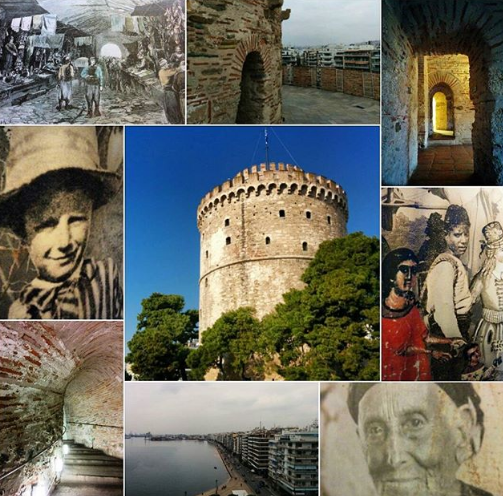
These days, the White Tower is open to the public and is home to exhibits and a timeline illustrating the city’s history. Head to the roof and enjoy the lovely vistas.
Follow the Old City Walls
If you’re a history buff like me and don’t mind off-the-beaten-track walks, then you’re in luck. In Thessaloniki, there’s no better way to familiarize yourself with the city and getting a real feel for it than by following the ancient city walls. It’s like taking a trip back in time and experiencing what the city used to look and feel like.



The city itself has been fortified since the 4th century. The walls are a late Roman style construction consisting of ashlar masonry and brick. By the late 19th century, the Ottomans destroyed parts of it for restructuring purposes. At the northern part of the walls, you’ll find the acropolis of the city, citadel and Heptapyrgion.
Explore Upper Town aka Old Town
It’s the only part of the city that survived the Great Fire of 1917. Upper Town (Old Town) features Thessaloniki’s rich past, traditional and preserved structures from a time long ago, including small stone-paved streets, lovely squares and houses in both Greek and Ottoman architecture.
At the top of Old Town sits the Acropolis of Thessaloniki. Inside the Acropolis, you’ll find the Heptapyrgion, the city’s main (Seven Tower) fortress. It’s a great place to explore and learn about the city’s past all while enjoying beautiful panoramic views of the entire city.
If you explore around the fortress, you’ll find lovely cafes, restaurants and tavernas that give you the perfect chance to sit, relax and take it all in.



Archeological Sites & Monuments
For over 2,000 years, this city has been at the crossroads of several civilizations. From Greek to Roman to Ottoman. That being said, monuments, points of interest and archeological sites are at almost every turn, including the Roman Forum, Arch of Galerius and the Rotunda.
The latter not only houses the city’s only minaret but has been a Roman mausoleum, a Christian church as well as a mosque. The Rotunda is also the oldest monument in the city dating back to the early 4th century.





Museums & Churches
Thessaloniki has several incredible museums to choose from. If you have an unlimited amount of time in the city, narrowing it down isn’t an issue. But if you only have a bit of time, hit up the Archeological Museum of Thessaloniki (AMoT) and Museum of Byzantine Culture (MoBC). They’re gems.
The AMoT showcases artifacts from prehistoric Macedonia and the foundation of the city as well as its evolution as a crossroads of history throughout the millennia.




The MoBC features treasures from the rich, Byzantine history that dominates Thessaloniki’s past. After all, the city was the 2nd largest – after Constantinople – in the Byzantine Empire. You’ll find heirlooms and artwork that date back to the 2nd century, wall-paintings, mosaics, icons and liturgical vessels.



Additionally, churches are around every corner. After I landed and checked in, I made a bee-line to an iconic church that has been on my list for a while. Agios Dimitrios is the patron saint of Thessaloniki and because my name in Greek is Dimitri, this was more of a pilgrimage than a visit.
Built in the 4th century AD, it certainly has had its fair share of scars but the character of the structure is still gorgeous. Venture underneath the Church and you’ll find the place where St. Demetrios was martyred.




Visit Ladadika District
So famous and loved, songs have been written about the Ladadika. With cobblestone streets and beautiful, colourful buildings, this district is old Thessaloniki at its best and is loved by both locals and visitors to the city. During the day, it’s calm as people often grab a coffee and a pastry. As the night comes, it gets a lot more festive as bars, restaurants and clubs open up and close at dawn.
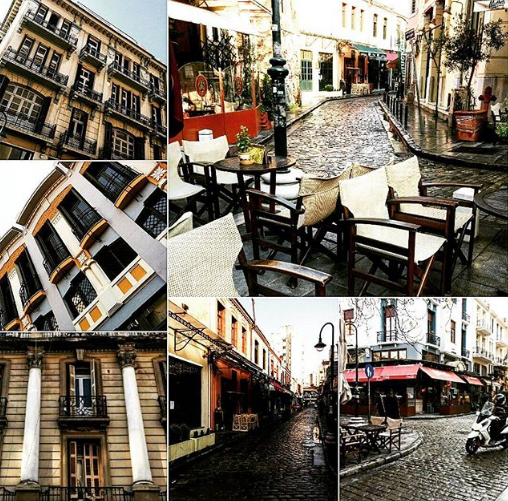
Very pedestrian-friendly, Ladadika literally means shops that sell oil. In the past, it was a central market, known as the “Egyptian Market”. Abandoned for some time in the 1970’s, it came back to life in the mid-1980’s, declared a historical monument by the Greek Ministry of Culture, protected by law in order to preserve its original style and character.
Hit the Markets
I love the chaos of senses overload, especially at outdoor markets. Add a bunch of men trying to out-yell each other, showcasing their products and looking for a good old bargain negotiation and you have a great experience.
Thessaloniki is loaded with outdoor bazaars that will definitely stimulate your senses. Expect to see colourful spices from all over the world, find items that you didn’t know existed (or haven’t seen in a while) and inhale aromas that will make you want to sample everything you see.
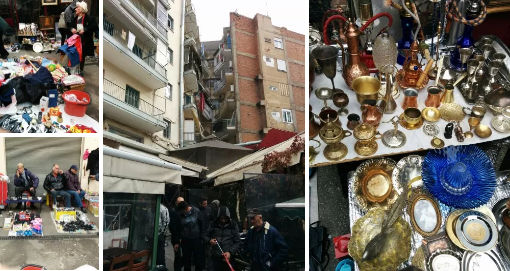
Surrounded by tall buildings, Bit Bazaar is tricky to find but easy to get lost in. Located just north of Aristotelous Square, it used to be home to immigrants from Asia Minor dating back to 1928.
Here, you’ll find unique and amazing antique finds as well as small tavernas. With fairly inexpensive food and drink, it’s popular with college kids. Locals often say that you need to have a bit more wine than you’re usual amount to really feel the energy and spirit of the market itself.

Located in the city centre and dating back to the late 1920’s, Modiano Market is a food lovers paradise, Modiano has everything from spices and coffee to produce, cheese, meat and fish. Inside, there are both traditional and new tavernas, restaurants and bars.
Kapani Market is the oldest open public market of Thessaloniki. Here, you’ll find fresh produce, spices, olives, fish, meat, traditional coffee shops and of course, bakeries and restaurants. Open (and packed) throughout the year, many of the shops have been family owned and operated for generations.
Bread Rings, Bougatsa & Trigona
Ah yes, the food. Thessaloniki may be Greece’s second largest city but it’s a culinary capital as far as I’m concerned. Besides the markets, the restaurants and pastry shops are all ridiculously amazing and there are several located on every block.
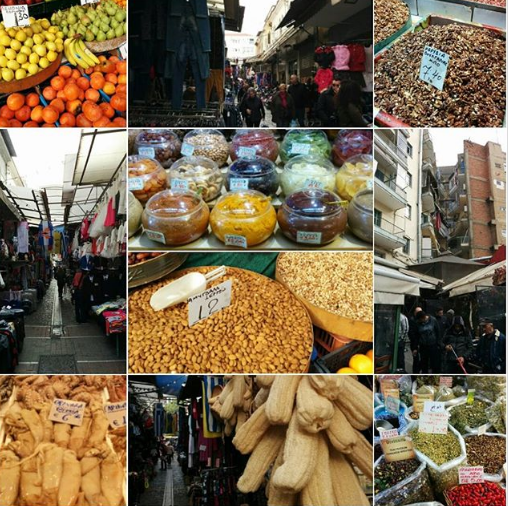
It’s tough to pick which one to go to and it’s just as tough to pick which pastry to eat. If you’re going to have three traditional dishes that are specialities to this city, they are the following:



The Koulouri, aka Bread Ring. Sesame covered, these braided bread rings are a staple, often freshest in the morning and sold everywhere, especially street corners. Grab and go, the bread ring is street food at its best.
Bougatsa is a breakfast pie with a phyllo pastry, stuffed with semolina custard, topped with cinnamon and powdered sugar.
Trigona consists of phyllo pastry, folded into triangles, baked, hollowed out and stuffed with ridiculously delicious custard cream. Yes, they’re really hard to resist. There are several places in the city that make their own version of Trigona but the place credited with making them first is Elenidis in 1960. They’ve been going very strong ever since.
There you have it. If it’s your first time in this magical city, these 10 unique must-experiences will keep you busy and make you happy.
Have you been to Thessaloniki? Did I miss something? Leave your thoughts in the comments below.

Jim Bamboulis has held several posts over the past 12 years, including National Sportscaster, Food Host and Writer, Talk Show Host, Olympic Researcher and Travel Film-maker.
Born and raised in Toronto, Jim learned early on that the combination of travel and food meant ultimate living. Combining his insatiable creative spirit and desire to document his travels, Jim took his unshakable travel bug and set off to explore. Add the fact that Jim also grew up in a Greek household and he learned that not only does Mom always make the best meals, but as importantly learned the importance of understanding and appreciating the countless beautiful cultures and the integral role food plays in every corner of the World.
In August 2009, Jim founded Travel Mammal, a site that brings together his travels and experiences (both good and terrifying) with the hope that others are inspired to share their own. We are all storytellers, especially when it comes to travel and food. He urges everyone to be inspired, explore and love the world and the people that share it with us. Or in other words, Live to Travel and travel to live!











